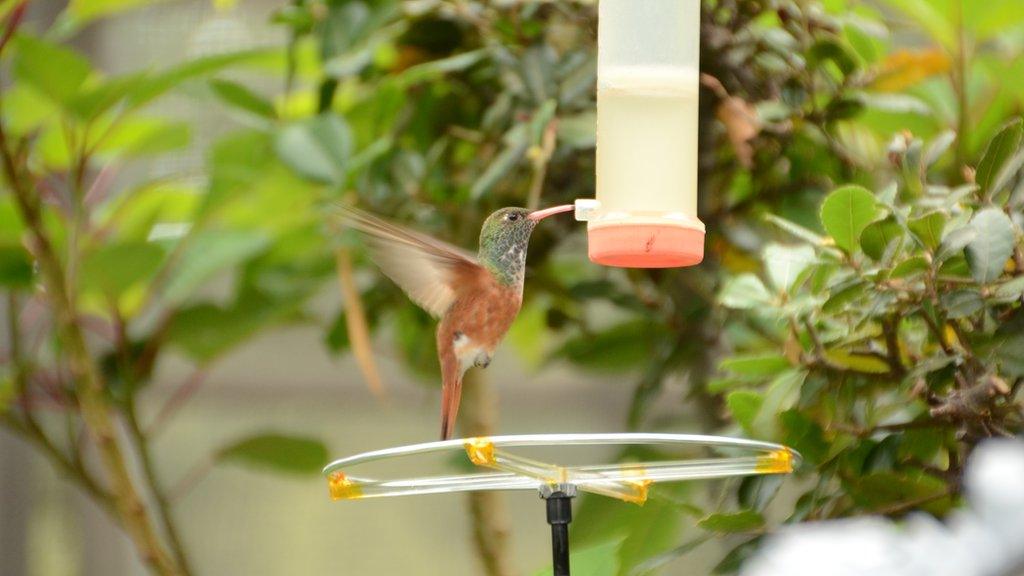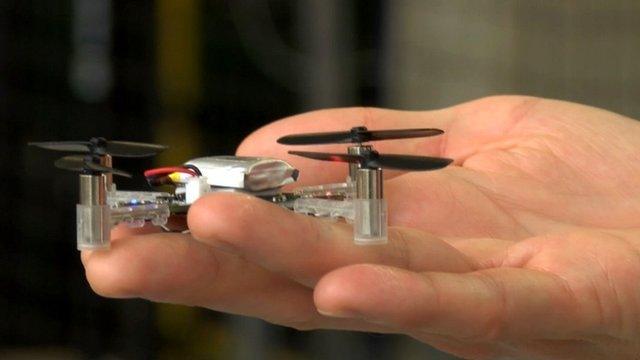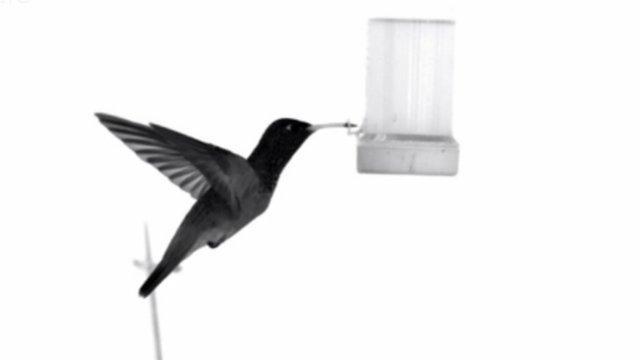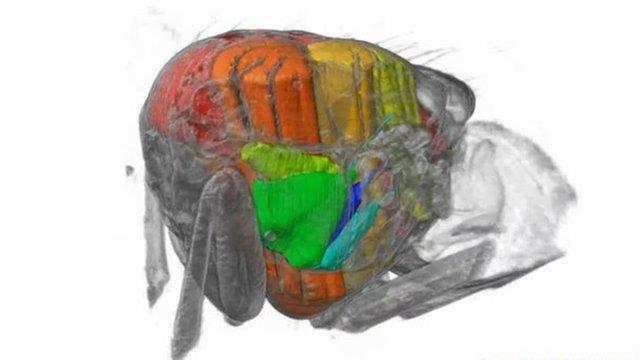Hummingbirds edge out helicopters in hover contest
- Published
Prof David Lentink from Stanford University explains how slow-motion footage helped reveal the secrets of a hummingbird's efficient flight
When it comes to flight, nature just has the edge on engineers.
This is according to a study comparing hummingbirds with one of the world's most advanced micro-helicopters.
Researchers found that - in terms of the power they require to lift their weight - the best hummingbird was over 20% more efficient than the helicopter.
The "average Joe" hummingbird, however, was on par with the helicopter, showing "how far flight engineering has come".
The findings are published in the Royal Society journal Interface.
Lead researcher Prof David Lentink, from Stanford University in California, explained that the flight performance of a hummingbird - the only bird capable of sustained hovering - was extremely difficult to measure.
"Imagine a 4g bird," he said. "The forces they generate are tiny.
"As a result the drag of a hummingbird wing has never been measured accurately."
Drag is the force opposing the upward force of lift that birds' wings generate by flapping.
Prof Lentink and his team wanted to understand if feathered hummingbird wings were more efficient - using less power to overcome drag - than the engineered blades of a helicopter of a similarly tiny scale.
He and his colleagues compared the birds' performance to an advanced micro-drone called the Black Hornet - a 16g helicopter used for surveillance by British troops in Afghanistan.
To make the laboratory measurements, they used wings from hummingbird specimens kept in museums.
By putting these detached wings into an apparatus called a wing spinner, the team was able to measure exactly how much flapping power was required to lift the bird's weight.
Prof Lentink's colleagues at the University of British Columbia in Canada also made recordings of wild hummingbirds in flight, to measure the exact movement of their wings - which beat up to 80 times per second.
"By combining the wings' motion with the drag [that we measured in the lab], we were able to calculate the aerodynamic power hummingbird muscles need to provide to sustain hover," explained Prof Lentink.
One species - the Anna's hummingbird - was champion hoverer, performing much more efficiently than the helicopter.
But on average, the birds hovering performance was "on par with the helicopter".
"This shows that if we design the wings well, we can build drones that hover as efficiently, if not more efficiently, as hummingbirds," said Prof Lentink.
"Clearly we are not even close to hummingbirds in many other design metrics, such as wind gust tolerance, visual flight control through clutter, to name a few.
Dr Mirko Kovac from Imperial College explains how drones whose design is inspired by nature are set to become part of our everyday lives
"But if we focus on aerodynamic efficiency, we are closer than we perhaps ever imagined possible."
Dr Mirko Kovac from the aerial robotics lab at Imperial College London said the study was a great example of research at the interface of biology and engineering.
"Studying hummingbird wing shapes can not only give insights into the biomechanics of animals," he told BBC News, "but the gained insights can also be used to build the next generation of flying micro robots."
Follow Victoria on Twitter, external
- Published4 July 2013

- Published23 May 2014

- Published8 July 2013

- Published26 March 2014
